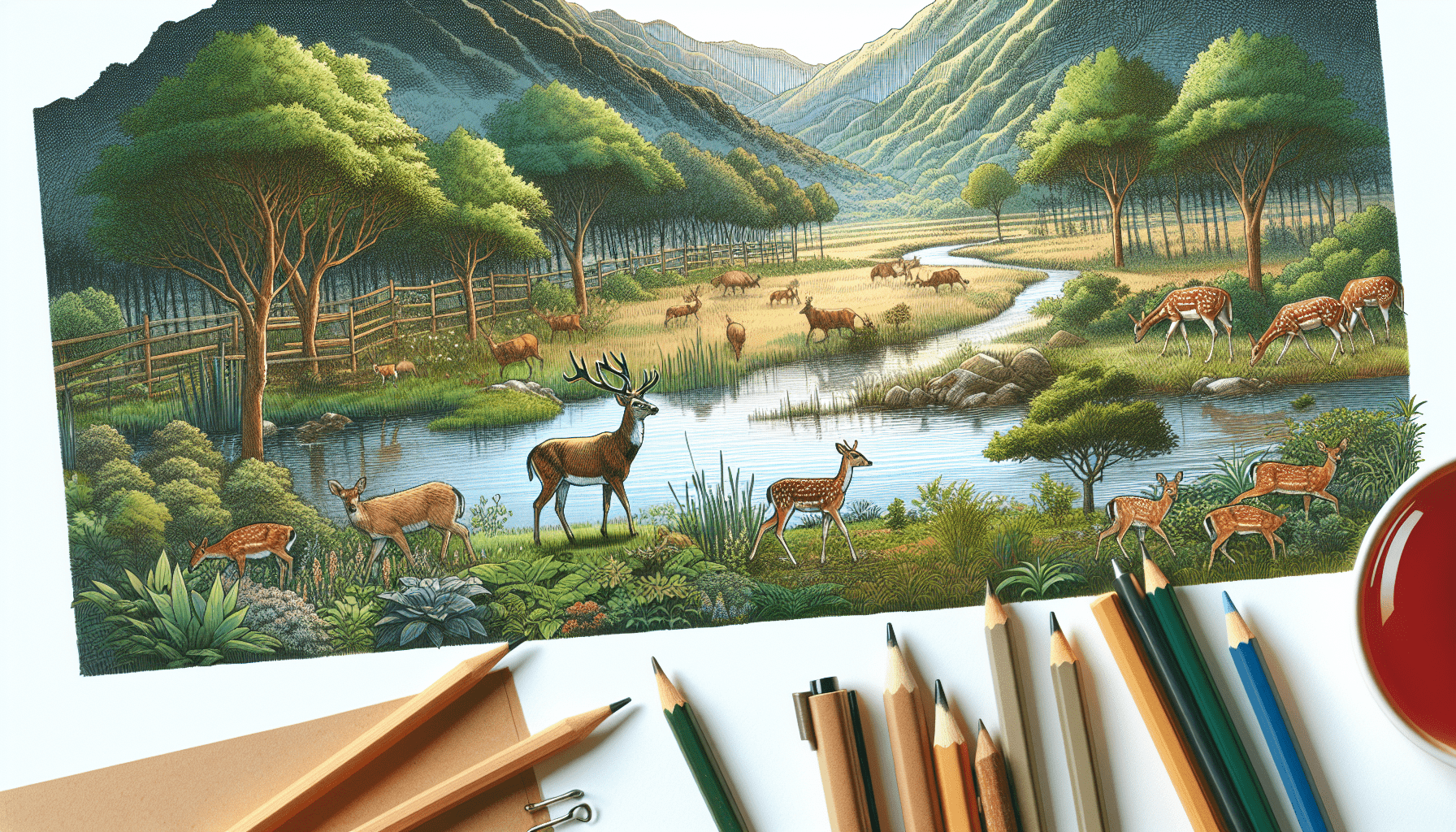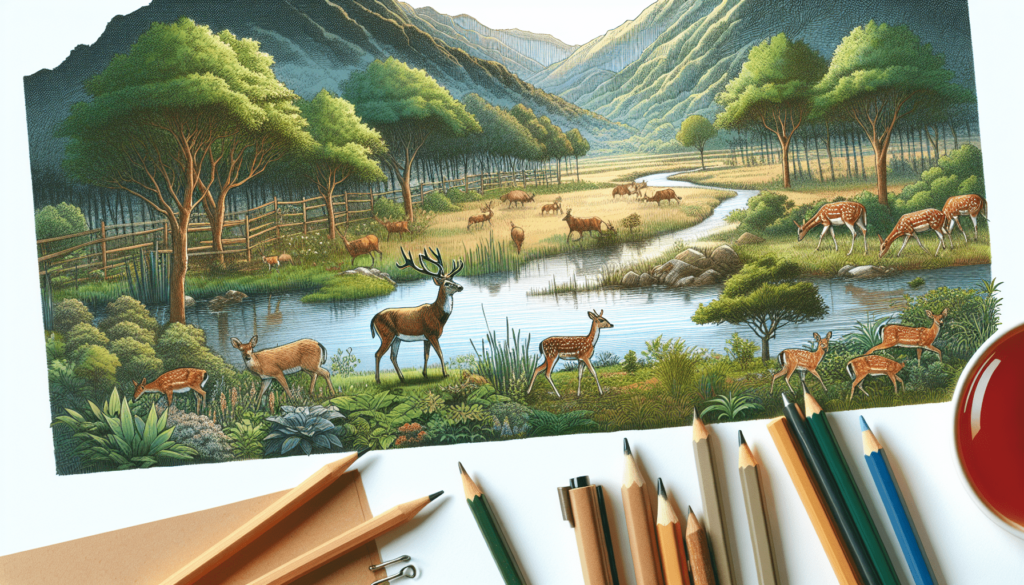
In this article, you will discover the key steps to create a comprehensive habitat for deer, going beyond simply relying on feeders. By understanding the natural needs and behaviors of deer, you can provide an environment that promotes their overall well-being. From enhancing cover and food sources to managing water and vegetation, creating a sustainable habitat will not only attract deer but also contribute to their long-term survival. Whether you are a wildlife enthusiast or a landowner looking to enhance your property, this article will guide you in creating a thriving and diverse habitat for these majestic animals.
Understanding Deer Behavior
Deer behavior plays a crucial role in their survival and well-being. To create a suitable habitat for deer, it is essential to understand their natural behavior and the factors that influence it. By gaining insight into their habits, we can provide the necessary elements for their needs. Three key factors that greatly influence deer behavior are food, water, and shelter. Additionally, human disturbances can have a significant impact on their behavior. Furthermore, deer have the remarkable ability to adapt to changing seasons, which is vital for their survival.
Sourcing Food: Beyond Simple Feeding
When creating a habitat for deer, it is important to go beyond simple feeding. Planting deer-friendly vegetation can provide a diverse food source throughout the year. Consider incorporating a variety of plants such as clover, alfalfa, and native grasses that offer high nutritional value and are preferred by deer. By doing so, you can attract deer to your habitat and provide them with sustenance. Moreover, growing tall grasses and other cover can offer a safe space for deer to forage and feel secure. Understanding the seasonal variation in deer’s diet is essential, as their preferences change throughout the year. Properly managing their food sources will ensure a healthy and thriving deer population.
Water Systems for Deer
Water is a vital component of a comprehensive deer habitat. Ensuring the availability of clean, fresh water is crucial for their survival. Deer need access to water on a daily basis to stay hydrated and thrive. Establishing water facilities such as ponds, streams, or even artificial water features can help meet their water needs. Consider the placement and maintenance of these water sources to ensure they are easily accessible for deer. A reliable water supply positively impacts the deer’s overall health and well-being.

Providing Safe Shelter and Bedding Areas
Deer require safe and secluded resting places to feel secure and escape potential threats. Understanding the need for secure bedding areas is essential when creating a deer habitat. Providing optimal bedding areas can be achieved by dense vegetation, such as native shrubs and trees, which offer cover and protection. These areas should be strategically located to minimize disturbance and provide a sense of security for deer. Additionally, shelter is especially important during different weather conditions, such as extreme cold or harsh storms. Providing adequate shelter ensures the welfare of deer throughout the year.
Ensuring a Safe Habitat from Predators
Predators pose a threat to deer, and it is crucial to take measures to protect them. Understanding the common predators in your area and their impact on the deer population is essential. Implementing strategies such as fencing and predator deterrents can help safeguard deer from threats. Additionally, shelter plays a significant role in predator protection. Well-placed shelter can provide hiding spots and escape routes, increasing the chances of survival for deer. By considering the potential threats and taking appropriate actions, we can create a safe environment for deer.
Introduction of Deer Mates
Maintaining a balanced sex ratio in the deer herd is vital for their overall well-being. Understanding deer mating behavior is crucial when introducing new deer into your habitat. Proper planning and consideration of factors such as genetics, age, and temperament can help ensure successful introductions. Coordinating with wildlife experts can provide valuable guidance and support in managing the deer population and maintaining a balanced sex ratio. By carefully introducing new mates, we can contribute to the long-term reproductive success of the deer herd.
Health Care for Deer
Like any living beings, deer are susceptible to various health problems. Understanding common health issues and their solutions is important for maintaining a healthy deer population. Regular health check-ups are essential to detect and address any potential health concerns. Partnering with local veterinarians and wildlife experts who specialize in deer care can provide invaluable assistance in managing their health. Furthermore, implementing preventive healthcare steps, such as vaccination programs and parasite control, can significantly contribute to the overall well-being of the deer population.
Managing the Habitat Throughout the Year
A comprehensive deer habitat requires seasonal adjustments to maintain its health and sustainability. Regular inspection and maintenance are necessary to ensure that the habitat meets the changing needs of the deer population. Monitoring the health and growth of the deer population over time allows for effective management practices. Adjusting food sources, water facilities, and shelter provisions according to the seasons helps optimize the habitat for deer’s well-being. By actively managing the habitat throughout the year, we can create an environment that supports a healthy and thriving deer population.
Integrating with the Larger Ecosystem
Deer play a vital role in the greater ecosystem, and their population has a ripple effect on other wildlife species. Understanding the role of deer in the ecosystem helps us create a habitat that promotes biodiversity. Deer interact with other wildlife species, such as birds, mammals, and insects, by providing food sources and affecting vegetation dynamics. Maintaining an eco-friendly deer habitat involves considering the needs of other species and promoting a balanced ecosystem. By integrating with the larger ecosystem, we can create a robust and sustainable environment that benefits all components of the ecosystem.
Legal Aspects and Permits
When creating a habitat for deer, it is essential to understand the local laws and regulations regarding habitat creation. Different regions may have specific requirements, such as permits and inspections, that need to be followed. By familiarizing yourself with the legal aspects, you can ensure that your habitat creation aligns with the necessary guidelines. Owning a deer habitat comes with various obligations, including providing suitable conditions for the deer population’s welfare. By meeting legal requirements, you contribute to the responsible management of deer and ensure compliance with local regulations.
In conclusion, creating a comprehensive habitat for deer involves understanding their behavior and meeting their fundamental needs for food, water, and shelter. By taking into account the impact of human disturbances, managing predator threats, and promoting a balanced sex ratio, we contribute to the overall health and well-being of the deer population. Regular health check-ups, seasonal adjustments, and integration with the larger ecosystem further enhance the sustainability of the habitat. By understanding the legal aspects and fulfilling obligations, we can create a safe and suitable habitat that allows deer to thrive and enrich the surrounding environment.



